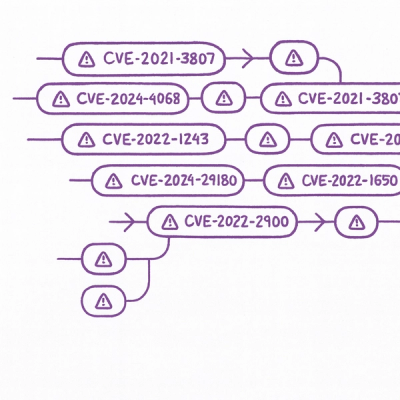
Security News
Astral Launches pyx: A Python-Native Package Registry
Astral unveils pyx, a Python-native package registry in beta, designed to speed installs, enhance security, and integrate deeply with uv.
A set of helper functions to make working with spatial data in open source tools easier. This package is maintained by Earth Lab and was originally designed to support the earth analytics education program.



EarthPy makes it easier to plot and manipulate spatial data in Python.
Python is a generic programming language designed to support many different applications. Because of this, many commonly performed spatial tasks for science including plotting and working with spatial data take many steps of code. EarthPy builds upon the functionality developed for raster data (rasterio) and vector data (geopandas) in Python and simplifies the code needed to:
mask_pixels())plot_rgb())plot_bands()normalized_diff())EarthPy also has an io module that allows users to
EarthPy's design was inspired by the raster and sp package functionality available to R users.
Check out our vignette gallery for applied examples of using EarthPy in common spatial workflows.
EarthPy can be installed using pip, but we strongly recommend that you install it using conda and the conda-forge channel.
If you are working within an Anaconda environment, we suggest that you install EarthPy using
conda-forge
$ conda install -c conda-forge earthpy
Note: if you want to set conda-forge as your default conda channel, you can use the following install workflow. We recommmend this approach. Once you have run conda config, you can install earthpy without specifying a channel.
$ conda config --add channels conda-forge
$ conda install earthpy
We strongly suggest that you install EarthPy using conda-forge given pip can be more prone to spatial library dependency conflicts. However, you can install earthpy using pip.
To install EarthPy via pip use:
$ pip install --upgrade earthpy
Once you have successfully installed EarthPy, you can import it into Python.
>>> import earthpy.plot as ep
Below is a quick example of plotting multiple bands in a numpy array format.
>>> arr = np.random.randint(4, size=(3, 5, 5))
>>> ep.plot_bands(arr, titles=["Band 1", "Band 2", "Band 3"])
>>> plt.show()
We welcome contributions to EarthPy. Below are the current active package maintainers. Please see our contributors file for a complete list of all of our contributors.
We've welcome any and all contributions. Below are some of the contributors to EarthPy. We are currently trying to update this list!!
We welcome contributions to EarthPy! Please be sure to check out our contributing guidelines for more information about submitting pull requests or changes to EarthPy.
When citing EarthPy, please cite our JOSS paper:
@article{Wasser2019EarthPy,
journal = {Journal of Open Source Software},
doi = {10.21105/joss.01886},
issn = {2475-9066},
number = {43},
publisher = {The Open Journal},
title = {EarthPy: A Python package that makes it easier to explore and plot raster and vector data using open source Python tools.},
url = {https://doi.org/10.21105/joss.01886},
volume = {4},
author = {Wasser, Leah and Joseph, Maxwell and McGlinchy, Joe and Palomino, Jenny and Korinek, Nathan and Holdgraf, Chris and Head, Tim},
pages = {1886},
date = {2019-11-13},
year = {2019},
month = {11},
day = {13},
}
FAQs
A set of helper functions to make working with spatial data in open source tools easier. This package is maintained by Earth Lab and was originally designed to support the earth analytics education program.
We found that earthpy demonstrated a healthy version release cadence and project activity because the last version was released less than a year ago. It has 3 open source maintainers collaborating on the project.
Did you know?

Socket for GitHub automatically highlights issues in each pull request and monitors the health of all your open source dependencies. Discover the contents of your packages and block harmful activity before you install or update your dependencies.

Security News
Astral unveils pyx, a Python-native package registry in beta, designed to speed installs, enhance security, and integrate deeply with uv.

Security News
The Latio podcast explores how static and runtime reachability help teams prioritize exploitable vulnerabilities and streamline AppSec workflows.

Security News
The latest Opengrep releases add Apex scanning, precision rule tuning, and performance gains for open source static code analysis.